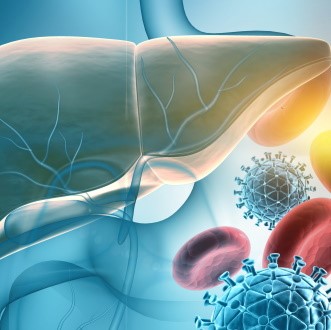
One of the reasons for the hepatitis development is often viruses. Currently, there are five known types of hepatitis viruses A, B, C, D and E, each of which poses a danger to human health. Ways of infection with viral hepatitis are possible in different ways.
Infection with hepatitis A and E virus occurs mainly through contaminated water, food and dirty hands. Hepatitis B, C and D viruses are transmitted through blood.
When the hepatitis C virus enters the human body, it affects the liver and is often not diagnosed in a timely manner, since the disease is painless, with mild symptoms and lasts for a long time, which leads to a chronic form, subsequently to cirrhosis or hepatocellular liver cancer.
Infection occurs when the blood of an infected person enters the bloodstream or damaged skin or mucous membranes of another person:
- people who inject drugs have the highest risk
- during medical interventions using insufficiently sterilized reusable instruments
- if non-sterile needles and other instruments are used in salons, then infection is possible during cosmetic procedures, manicure, pedicure, tattooing, piercing
- at home, when using common razors with blades, manicure and pedicure accessories, because blood particles can remain on the surface of the instruments, and in the event of microtraumas, the virus can enter the wound and cause illness
- during unprotected sexual contact, the hepatitis C virus is transmitted sexually
- during pregnancy or childbirth from an infected mother to a child
Hepatitis C is not transmitted by shaking hands or kissing, through water or dishes, sneezing or coughing, or by hugging. During breastfeeding, infection of a child from an infected mother is possible only if blood from an inflamed nipple gets on the baby's damaged lips; infection is impossible through breast milk in the absence of these conditions.
Symptoms of hepatitis C:
During the first 6 months from the moment of infection, the disease does not manifest itself - it may be asymptomatic, or the symptoms are mild and the patient does not pay attention to them.
In acute cases, it is expressed by general weakness, fatigue, loss of appetite, nausea, vomiting, high fever, abdominal pain, joint pain, urine darkening and yellowing of the skin and eyes sclera - jaundice.
Most often, the disease is asymptomatic.
To prevent infection and development of the disease it is necessary:
- to refuse unnecessary cosmetic procedures - tattoos, piercings
- do not to allow other family members using razors, manicure and pedicure accessories, toothbrushes and other hygiene products
- to prevent sexual transmission of infection by using barrier protection (condoms)
- women, before planning pregnancy, are recommended to undergo testing for the hepatitis C virus
It is important to know! There is no vaccine for hepatitis C.
Viral hepatitis is a common and dangerous disease, which is easier to prevent than to cure it!



